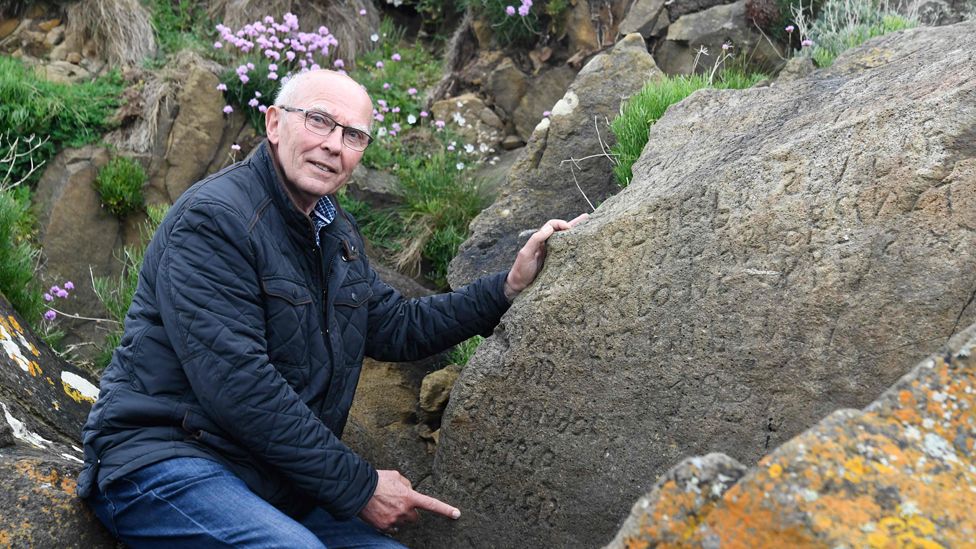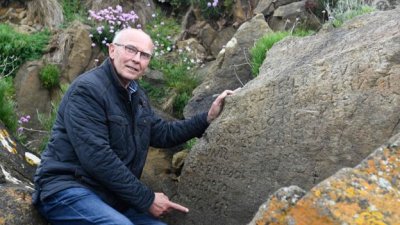maximus otter
Recovering policeman
- Joined
- Aug 9, 2001
- Messages
- 13,948
A village in western France is offering a €2,000 (£1,726) prize for help in deciphering a 230-year-old inscription found on a rock on a remote beach.
Until now no-one has been able to make out the meaning of the 20 lines of writing, discovered a few years ago.

The metre-high slab is in a cove accessible only at low tide near the Brittany village of Plougastel.
Among the normal French letters some are reversed or upside-down. There are also some Scandinavian-style Ø letters.
Two years are visible - 1786 and 1787 - dating the inscription to a few years before the French Revolution. There is also the image of a ship with sails and rudder, and a sacred heart - a heart surmounted by a cross.
Some think it may be in old Breton or Basque, and that the person who wrote it may only have been semi-literate.
In one section the letters read: "ROC AR B … DRE AR GRIO SE EVELOH AR VIRIONES BAOAVEL".
Another reads: "OBBIIE: BRISBVILAR... FROIK … AL".
The public appeal for help is called "The Champollion Mystery at Plougastel-Daoulas" - honouring Jean-François Champollion, the linguist who deciphered the Rosetta Stone's ancient Egyptian hieroglyphics in the 19th Century.
Linguistic and archaeological enthusiasts are asked to register at the mayor's administration, then they will be sent photographs of the inscription. Hundreds of people have already expressed interest.
When entries close in November, a panel will choose the most plausible interpretation of the mystery.
https://www.bbc.com/news/world-europe-48212442
maximus otter
Until now no-one has been able to make out the meaning of the 20 lines of writing, discovered a few years ago.

The metre-high slab is in a cove accessible only at low tide near the Brittany village of Plougastel.
Among the normal French letters some are reversed or upside-down. There are also some Scandinavian-style Ø letters.
Two years are visible - 1786 and 1787 - dating the inscription to a few years before the French Revolution. There is also the image of a ship with sails and rudder, and a sacred heart - a heart surmounted by a cross.
Some think it may be in old Breton or Basque, and that the person who wrote it may only have been semi-literate.
In one section the letters read: "ROC AR B … DRE AR GRIO SE EVELOH AR VIRIONES BAOAVEL".
Another reads: "OBBIIE: BRISBVILAR... FROIK … AL".
The public appeal for help is called "The Champollion Mystery at Plougastel-Daoulas" - honouring Jean-François Champollion, the linguist who deciphered the Rosetta Stone's ancient Egyptian hieroglyphics in the 19th Century.
Linguistic and archaeological enthusiasts are asked to register at the mayor's administration, then they will be sent photographs of the inscription. Hundreds of people have already expressed interest.
When entries close in November, a panel will choose the most plausible interpretation of the mystery.
https://www.bbc.com/news/world-europe-48212442
maximus otter



